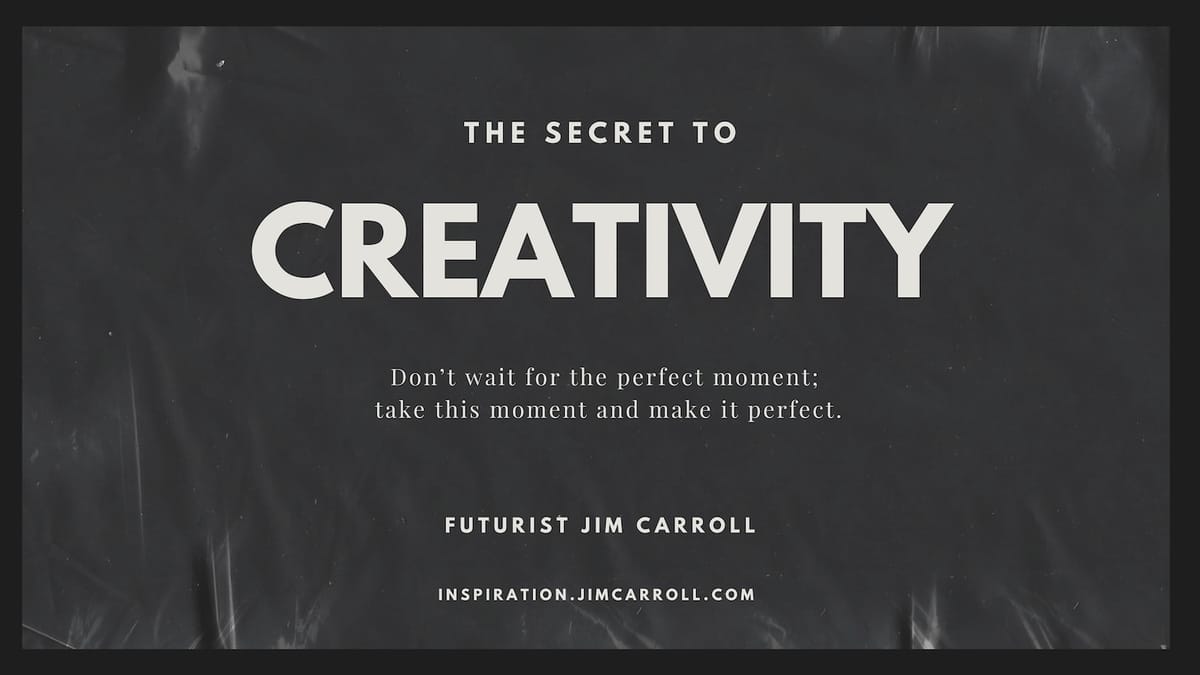"The Secret to Creativity: Don't wait for the perfect moment; take this moment and make it perfect." - Futurist Jim Carroll
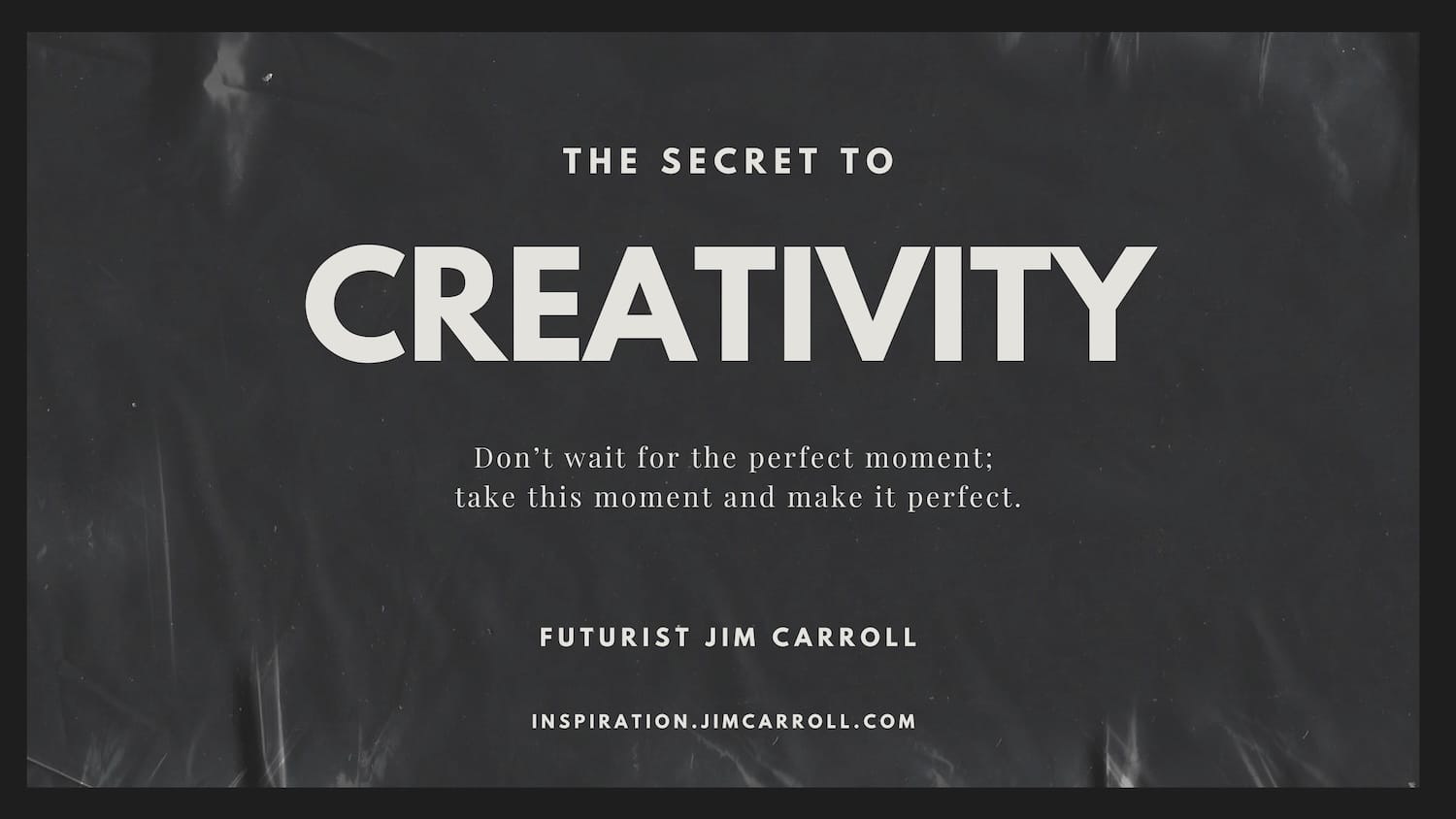
As someone who has spoken on the topic of innovation worldwide, I've long understood creativity to be one of the most important skills we can have.
But how do we build it, nurture it, develop it, and protect it?
There are many ways to do this! One of the interesting things I am learning about the use of AI is that it is a powerful tool to revisit large sets of data and examine them for key insights. Yesterday, I exported all of my blog posts - several thousand from 2002 - organized into categories. I picked one random category - Creativity - and started to work with it.
Through the years, I've covered the topic in a lot of depth, ranging from methods of fostering and accelerating innovation to aligning with trends to chasing your inner uniqueness. And it does form the core of my upcoming book, Being Unique: Turning Curiosity, Creativity, and Courage into Your Competitive Edge.
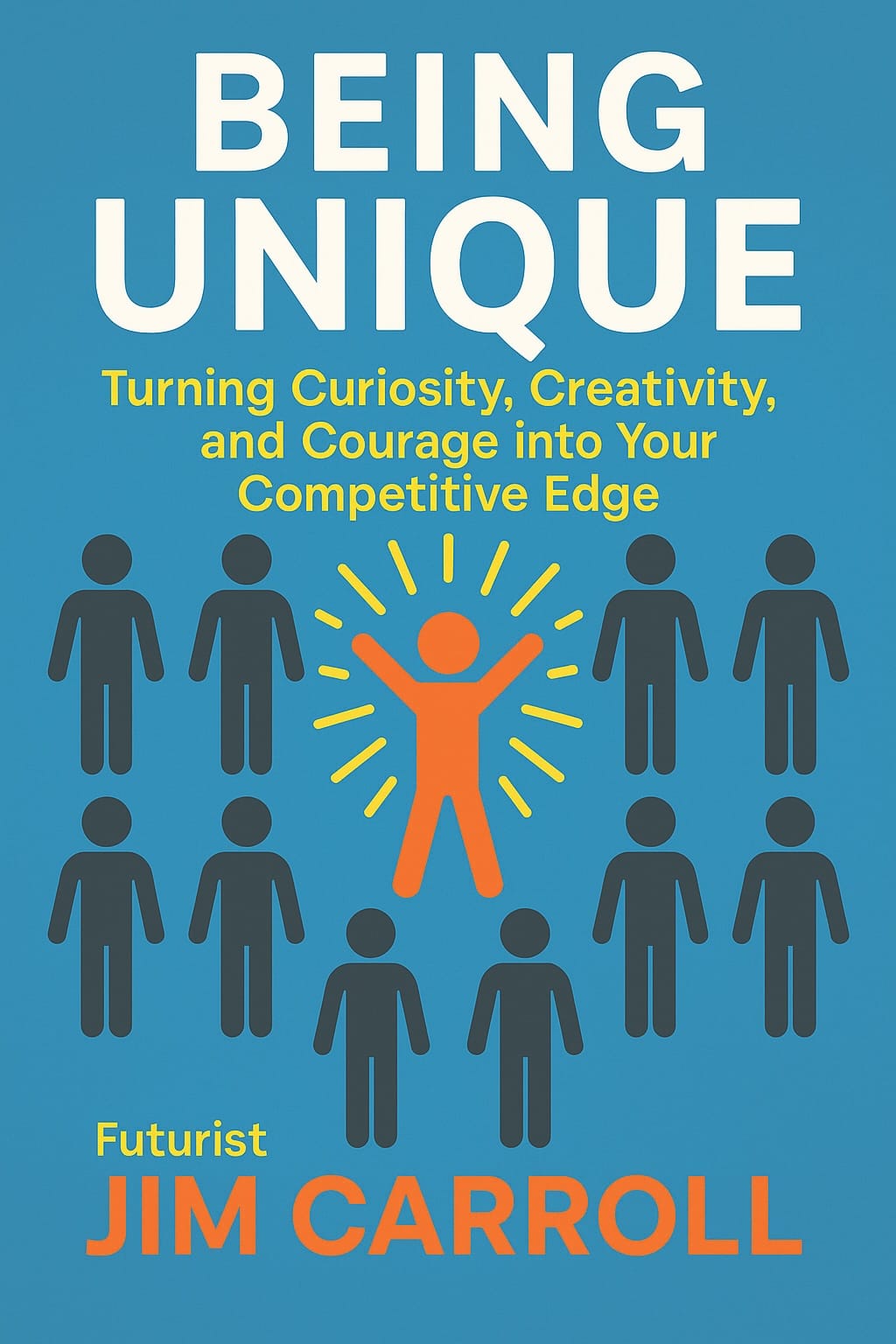
I worked through the material in Gemini and came up with a list of 25 strategies that could help you think about this issue. It's a pretty good list!
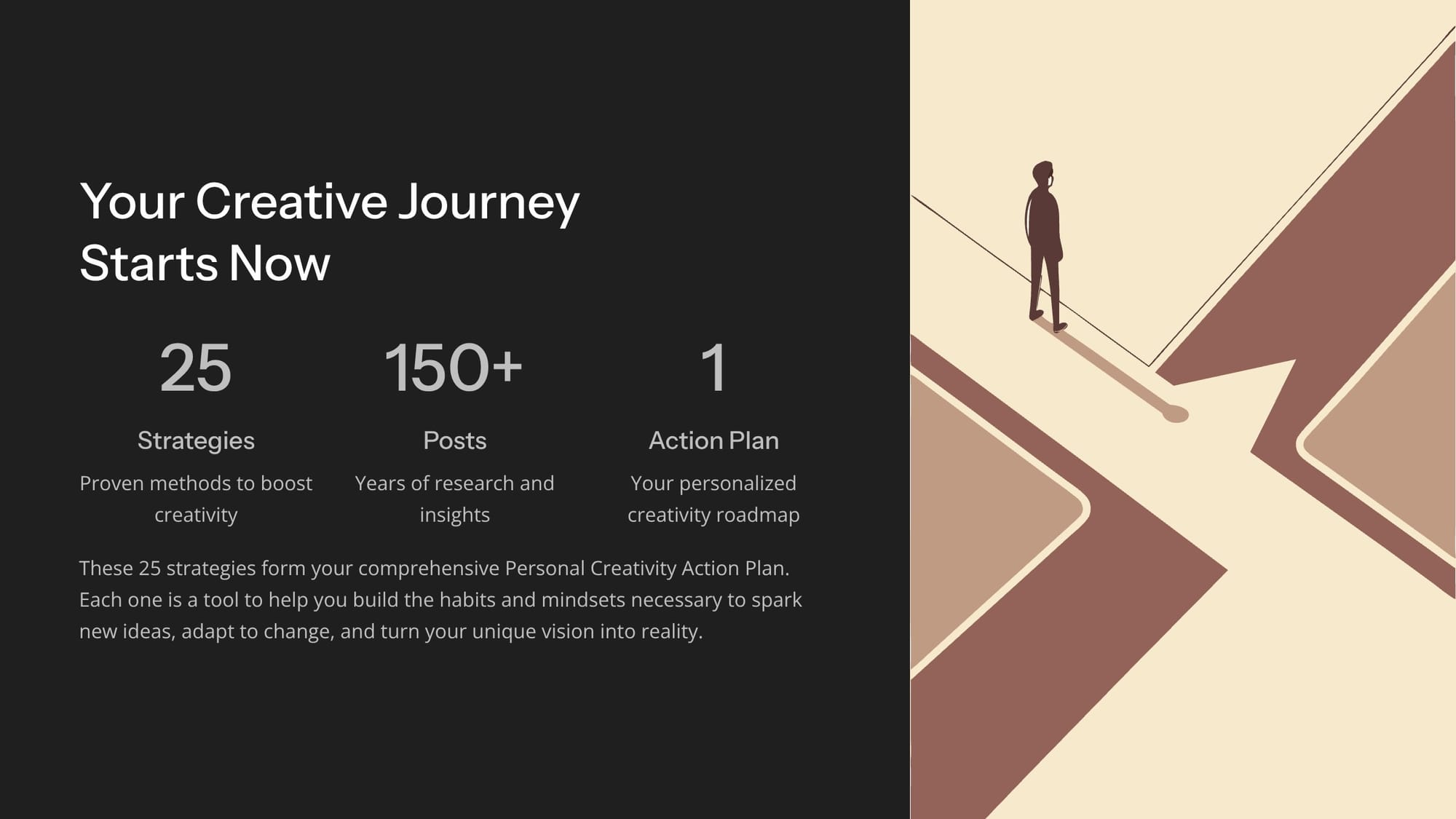
Your Personal Creativity Action Plan is a PDF that I generated by examining all 150 posts and digging out the advice I've given over the years as to how to accelerate your creativity. You can grab it here.
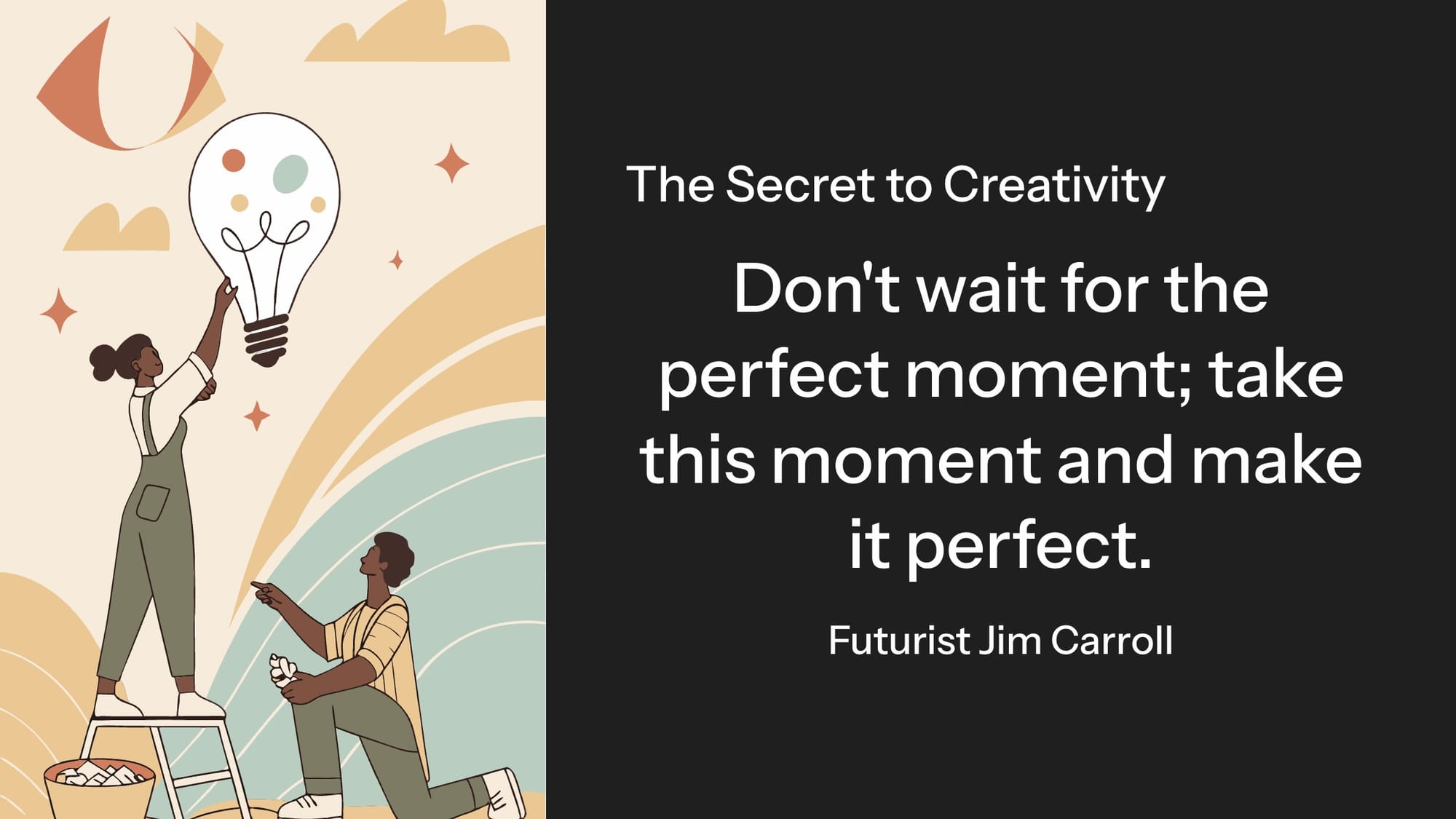
Here goes - these are the ideas designed to help you build the habits and mindsets necessary to spark new ideas, adapt to change, and turn your unique vision into reality.
- Embrace New Tools and Technologies. Start learning to use new tools, like AI, to augment your skills. You can master a complex skill, such as Python programming, without deep prior knowledge by using AI as your creative partner.
- Put Your Curiosity into Overdrive. Make a conscious effort to be more curious. It's a powerful personal trait that fuels the exploration of new ideas. Set aside time to go down "rabbit holes" and learn wonderfully useless things but spark your interest.
- Listen to the Rebels and Misfits. Seek out the "industry expatriates" and nonconformists who are tearing apart conventional business models. They often see the future more clearly because they aren’t invested in protecting the past.
- Create a "Thinking Queue." To avoid feeling overwhelmed by new information, create a personal "thinking queue" of ideas, topics, and inspirations to explore later. This lets you manage change and ponder new concepts when you have the mental space.
- Learn from Your Failures. View setbacks as part of the plan. A brilliant idea that is badly executed can often lead to a better idea executed brilliantly later on. Analyze your failures to figure out what to do better next time.
- Defend Your Best Ideas from Opposition. Understand that your most innovative ideas will likely face the most intense opposition. People will line up to kill great ideas for many reasons. Don't let their resistance, fear, or attachment to the status quo deter you. Your belief in your idea is what will carry it through.
- Act Now and Avoid Indecision. In a fast-moving world, the perfect plan doesn't exist. Taking initiative today is better than waiting for a perfect plan tomorrow. Remember that "later" is the graveyard where great ideas go to die.
- Build a Diverse Personal Network. Surround yourself with oddballs, rebels, and people who think differently than you. If you're building a team, hire people who are different from you to avoid creating a "monoculture of thinking".
- Avoid the Trap of Groupthink. Recognize that seeking consensus often kills creativity by pursuing the lowest-risk path and shutting down bold ideas. Don't be afraid to be a "lone wolf" or pursue an idea without total agreement.
- Reframe Trends as Opportunities. While many people see a trend and view it as a threat, you should train yourself to see the same trend as an opportunity. This mindset is a key differentiator for innovators.
- Look to the Edges, Not the Center. Pay attention to experiments and offbeat ideas happening on the fringes of your industry or field of interest. The future doesn't begin in headlines; it starts in niche communities and small research labs.
- Learn to "Strapboot" Your Solutions. This is the ability to create an instant solution with the resources you have on hand. When faced with a problem, take inventory of what's available and figure out how to innovate with just that.
- Make Your Creative Process Fun. Innovation thrives in the building of sandcastles partly because it's fun. Approach your creative projects with the same spirit to allow new ideas to flourish.
- Value Your "Dumb" Ideas. Recognize that many great ideas were once considered dumb or crazy. Don't let criticism or bias shut down a concept; any idea should be welcomed for exploration.
- Practice Cognitive Flexibility. Actively challenge your own ingrained patterns and be willing to shift gears or consider alternative perspectives. This is the opposite of the "cognitive rigidity" that stifles innovation.
- Use Storytelling to Turn Your Ideas into Action. The most powerful way to drive innovation isn't through data alone, but through stories that spark action. Practice turning your observations into compelling narratives that can inspire others (and yourself) to act.
- Seek Out Instant Feedback. The world is changing so fast that you must have a constant ear tuned to what your customers or audience are telling you. Share your prototypes or early ideas to see how they land and where you can improve.
- Take on Challenges That Seem Impossible. Don't just say something can't be done—find a way to do it. A willingness to embrace new and unproven technologies is key to your mission.
- Eliminate Hierarchy in Your Creative Process. When working on a project, especially with others, let the best ideas win regardless of where they come from. This prevents "organizational sclerosis" and allows everyone to pitch in where needed.
- Cultivate an Optimistic Mindset. Your optimism is your fuel for the future. A positive outlook provides the energy you need to take action in the face of uncertainty and see opportunities where others see problems.
- Dare to Be the Unicorn. In a world of lemmings, be the unicorn. When everyone else is doing the same thing, find what makes you different and do more of it.
- Experiment Constantly. Treat experimentation as a rehearsal for your future success. Don't wait for a perfect plan; launch something manageable, learn from it quickly, and then expand its impact.
- Actively Build Your "Experiential Capital." This is the deep, practical knowledge that comes from trying new things firsthand. The more risks you take and learn from, the more this valuable personal asset grows.
- Collaborate with People Who Have Different Skills. Bring together people with diverse talents to work on a problem. Breakthroughs often come from this type of cross-disciplinary collaboration.
- Pay Attention to the "Front Lines." Whether you are a CEO or an individual contributor, the people closest to the customer or the problem often have the best ideas and see opportunities others miss.
The thing is, you need to start today.
- Choose one strategy and implement it immediately
- Then, build momentum
- Add new practices as habits form
- Trust the process!
Your creativity will compound over time. Trust me. I know it works for me.
And remember what I keep telling you - the future isn't something that just happens to you; it's something you actively create.
Creativity is core to your future.
Act accordingly.
Futurist Jim Carroll is busy discovering new nuggets of creativity buried deep within the insight he has been sharing for years!

